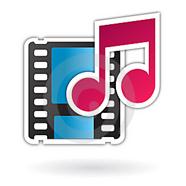
КАТЕГОРИИ:
Архитектура-(3434)Астрономия-(809)Биология-(7483)Биотехнологии-(1457)Военное дело-(14632)Высокие технологии-(1363)География-(913)Геология-(1438)Государство-(451)Демография-(1065)Дом-(47672)Журналистика и СМИ-(912)Изобретательство-(14524)Иностранные языки-(4268)Информатика-(17799)Искусство-(1338)История-(13644)Компьютеры-(11121)Косметика-(55)Кулинария-(373)Культура-(8427)Лингвистика-(374)Литература-(1642)Маркетинг-(23702)Математика-(16968)Машиностроение-(1700)Медицина-(12668)Менеджмент-(24684)Механика-(15423)Науковедение-(506)Образование-(11852)Охрана труда-(3308)Педагогика-(5571)Полиграфия-(1312)Политика-(7869)Право-(5454)Приборостроение-(1369)Программирование-(2801)Производство-(97182)Промышленность-(8706)Психология-(18388)Религия-(3217)Связь-(10668)Сельское хозяйство-(299)Социология-(6455)Спорт-(42831)Строительство-(4793)Торговля-(5050)Транспорт-(2929)Туризм-(1568)Физика-(3942)Философия-(17015)Финансы-(26596)Химия-(22929)Экология-(12095)Экономика-(9961)Электроника-(8441)Электротехника-(4623)Энергетика-(12629)Юриспруденция-(1492)Ядерная техника-(1748)
Key information section 3. Web pages can also include multimedia files: animations, audio and VIdeo files
|
|
|
|

| 
| 
|
Web pages can also include multimedia files: animations, audio and video files. Sounds and video are recorded with different formats.
MIDI (Musical Instrument Digital Interface) – a MIDI file doesn’t contain actual audio data, but rather contains commands that let MIDI-capable synthesizers re-create a specific musical passage. The MIDI protocol has been used for years as a way for electronic musical instruments (like digital keyboards and sequencers) to communicate with each other.
Computer sound cards typically feature the ability to interpret MIDI files into music. Since they don’t actually contain the music itself, but rather the commands used to re-create music, MIDI files are a lot smaller than audio files like MP3s, WMAs, or WAVs. MIDI files are small and manageable enough that it’s not uncommon to find them embedded in web pages, adding a sonic element to the surfing experience. MIDI files usually appear with the “.MID” filename extension.
MPEG – MPEG stands for Moving Picture Experts Group – a committee that sets international standards for the digital encoding of movies and sound. There are several audio/video formats which bear this group’s name. In addition to their popularity on the Internet, several MPEG formats are used with different kinds of A/V gear.
MPEG1. This format is often used in digital cameras and camcorders to capture small, easily transferable motion video clips. It’s also the compression format used to create Video CDs. Commonly used for posting clips on the Internet. The well-known MP3 audio format is part of the MPEG1 codec.

| MPEG2. Commercially produced DVD movies, home-recorded DVD discs, and digital satellite TV broadcasts all employ MPEG2 video compression to deliver their high-quality picture. MPEG2 is also the form of compression used by TiVo-based hard disk video recorders. MPEG2 can rival, or even slightly outperform, the DV format when it comes to picture quality – despite the fact that MPEG2 is a “heavier” form of compression (i.e., it removes a larger portion of the |
original video signal).
The MPEG2 codec allows for selectable amounts of compression to be applied, which is how home DVD recorders and hard disk video recorders can offer a range of recording “speeds.”
MPEG4. This newer, very flexible MPEG codec is used for both streaming and downloadable Web content, and is also the video format employed by a growing number of portable video recorders. MP3 (MPEG1, Audio Layer 3) – the most popular codec for storing and transferring music. Though it employs a “lossy” compression system which removes frequencies judged to be essentially inaudible, MP3 still manages to deliver near-CD sound quality in a file that’s only about a tenth or twelfth the size of a corresponding uncompressed WAV file. When creating an MP3 file, varying amounts of compression can be selected, depending on the desired file size and sound quality.
MP3 Pro – an updated version of the original MP3 codec, MP3 Pro allows small, low-bitrate files to contain much more high-frequency detail than standard MP3 files encoded at similar low bitrates. The high-frequency portion of the audio signal is handled by an advanced and extremely efficient coding process known as Spectral Band Replication (SBR), while the rest of the signal is encoded using the same process as in regular MP3. This enables older MP3 “player” software applications to play files encoded in MP3 Pro – though older software can only play the standard, non-SBR-encoded portions of the signal (which means you lose the highs altogether). However, when encoded and played back using a fully compatible audio program, MP3 Pro files deliver very good sound quality using low bitrates.
AAC (Advanced Audio Coding) – an up-and-coming compression format for digital audio. In terms of sound quality and data efficiency, AAC solidly beats the still-popular MP3 format – not surprising, since AAC is a newer, more advanced form of compression. According to some listening tests, AAC files encoded at lower bitrates (like 96 Kbps) sound as good or better than MP3s encoded at higher bitrates (like 128 Kbps) despite their notably smaller size. The current version of the AAC codec was developed as part of the MPEG4 standard. AAC is the audio file format used by Apple in their popular iTunes Music Store. Files may appear on your system with the “.M4A” filename extension.
AU – an audio format commonly used for posting sound clips on the Internet. AU files can be played back on Windows, Macintosh, and other operating systems.
WAV – a standard audio format for Windows operating systems, often used for storing high-quality, uncompressed sound. WAV files can contain CD-quality (44.1 KHz/16-bit) audio signals. However, CD-quality WAV files require relatively large amounts of memory – roughly 10 MB per minute of music.
| WMA (Windows Media Audio) –developed by Microsoft, Windows Media Audio is one of today’s most popular Net audio formats. Though not as popular as MP3, WMA tends to outperform MP3 in the area of sound quality, particularly with files encoded at lower bitrates like 64 or 96 Kbps. This performance advantage makes it handy for applications like portable digital audio players, where total play time is limited by a finite amount of internal memory. | 
|
The Windows Media Audio format features built-in copy protection abilities, unlike MP3. Windows XP, Microsoft’s current flagship operating system software, contains native support for WMA encoding, enabling users to create their own WMA music files.
WMV (Windows Media Video) – Microsoft’s proprietary compression format for motion video, Windows Media Video is used for both streaming and downloading content via the Internet. Microsoft’s Windows Media Player, an application bundled with Windows XP operating systems, lets you playback and manage a range of audio and video file types, including, of course, WMA and WMV.
Ogg Vorbis = Vorbis – is an “open-source” digital audio compression format. It exists in the public domain and is completely free for commercial or non-commercial use. Because Vorbis is most often used in conjunction with a digital A/V container format known as “Ogg,” it’s usually referred to as “Ogg Vorbis.”
QuickTime – is a file format for storing and playing back movies with sound. Though developed and supported primarily by Apple Computer, Inc., this flexible format isn’t limited to Macintosh operating systems – it’s also commonly used in Windows systems, and other types of computing platforms. In Windows, QuickTime files usually appear with the “.MOV” filename extension.
RealMedia – one of the most popular formats for streaming content on the Internet, RealMedia includes the RealAudio codec for sound clips and RealVideo codec for movies. RealAudio and RealVideo files are often given the common RealMedia “.RM” file extension. RealMedia files are often heavily compressed so they can stream over dial-up Internet connections.
SDII (Sound Designer II) – an audio format for Macintosh operating systems which is often employed by pro-quality sound editing software applications. SDII files, like AIFF and WAV files, are capable of storing uncompressed CD-quality audio.
SDMI (Secure Digital Music Initiative) – isn’t a type of file format; rather, it’s a copyright protection system for digital music files. SDMI-compliant hardware and software enables to download and play music distributed on the Internet – not only free MP3 files, but also copy-protected music from major-label artists.
SHN (Shorten) – shorten is a “lossless” form of compression for digital audio. A SHN file is only about 1/2 the size of its original WAV or AIFF source. Unlike “lossy” audio codecs (like MP3, WMA, etc.), SHN is capable of reproducing the original audio signal in its entirety, without removing frequencies. Because of this, SHN offers significantly better sound quality than MP3. However, since SHN files require significantly more storage space than MP3 files, this format isn’t nearly as convenient when it comes to storage or download time.

| Variable Bitrate (VBR) –much newer audio and video codecs employ a technology known as variable-bitrate encoding, which allows resulting files to look and sound better, while still retaining a compressed, convenient file size. Essentially, VBR encoding assigns more bits to complexly detailed passages in the original source, and fewer bits to the simpler passages. By contrast, constant-bitrate (CBR) encoding uses about the same |
amount of memory for simple and complex passages – so the user is more likely to experience audible or visible loss of quality during complex parts, especially with lower-bitrate files.
Shockwave and Flash are technologies that enable web pages to include video and animations.
Adobe Shockwave (formerly Macromedia Shockwave) is a multimedia player program, first developed by Macromedia, acquired by Adobe Systems in 2005. It allows Adobe Director applications to be published on the Internet and viewed in a web browser on any computer which has the Shockwave plug-in installed.
| Shockwave movies are authored in the Adobe Director environment. While there is support for including Flash movies inside Shockwave files, authors often choose the Shockwave Director combination over Flash because it offers more features and more powerful tools. Features not replicated by Flash include a much faster rendering | 
|
engine, including hardware-accelerated 3D, and support for various network protocols, including Internet Relay Chat. Furthermore, Shockwave's functionality can be extended with so-called "Xtras".
Unlike Flash, the Shockwave browser plugin is not available for Linux or Solaris despite intense lobbying efforts. However, the Shockwave Player can be installed on Linux with CrossOver or by running a Windows version of a supported browser in Wine (with varying degrees of success).
Although Shockwave was designed for making a wide variety of online movies and animations, its actual use has become concentrated in the area of game development. It is often used in online applications which require a very rich graphical environment. Online Learning tools which simulate real-world physics or involve significant graphing, charting, or calculation sometimes use Shockwave.

| Adobe Flash (formerly Macromedia Flash) is a multimedia platform used to add animation, video, and interactivity to Web pages. Flash is frequently used for advertisements and games. More recently, it has been positioned as a tool for "Rich Internet Applications" ("RIAs"). Flash manipulates vector and raster graphics to provide animation of text, drawings, and still images. |
It supports bidirectional streaming of audio and video, and it can capture user input via mouse, keyboard, microphone, and camera. Flash contains an Object-oriented language called ActionScript.
Flash content may be displayed on various computer systems and devices, using Adobe Flash Player, which is available free of charge for common Web browsers, some mobile phones and a few other electronic devices (using Flash Lite).

| Java applets, specific applications using that programming language, may be used to add interactivity to web pages. Applets are used to provide interactive features to web applications that cannot be provided by HTML alone. They can capture mouse input (like rotating 3D object) and also have controls like buttons or |
check boxes.In response to the user action an applet can change the provided graphic content. This makes applets well suitable for demonstration, visualization and teaching. There are online applet collections for studying various subjects, from physics to heart physiology. Applets are also used to create online game collections that allow players to compete against live opponents in real-time.
To see or hear all these files, it is important to download the right plug-in, the additional software that enables the web browser to support this new content.
|
|
|
|
|
Дата добавления: 2014-12-27; Просмотров: 908; Нарушение авторских прав?; Мы поможем в написании вашей работы!